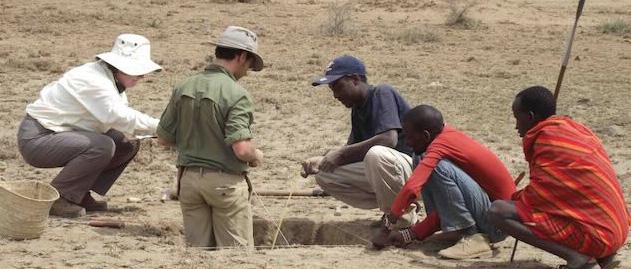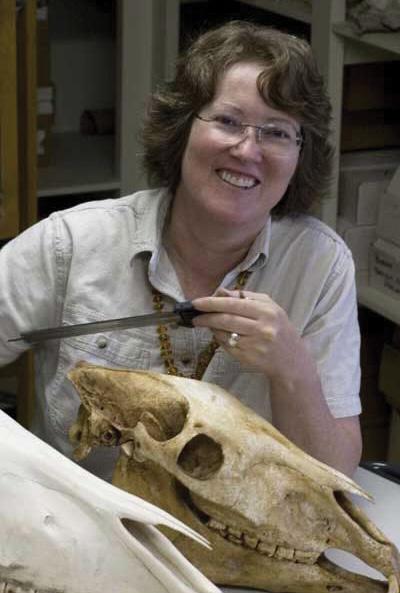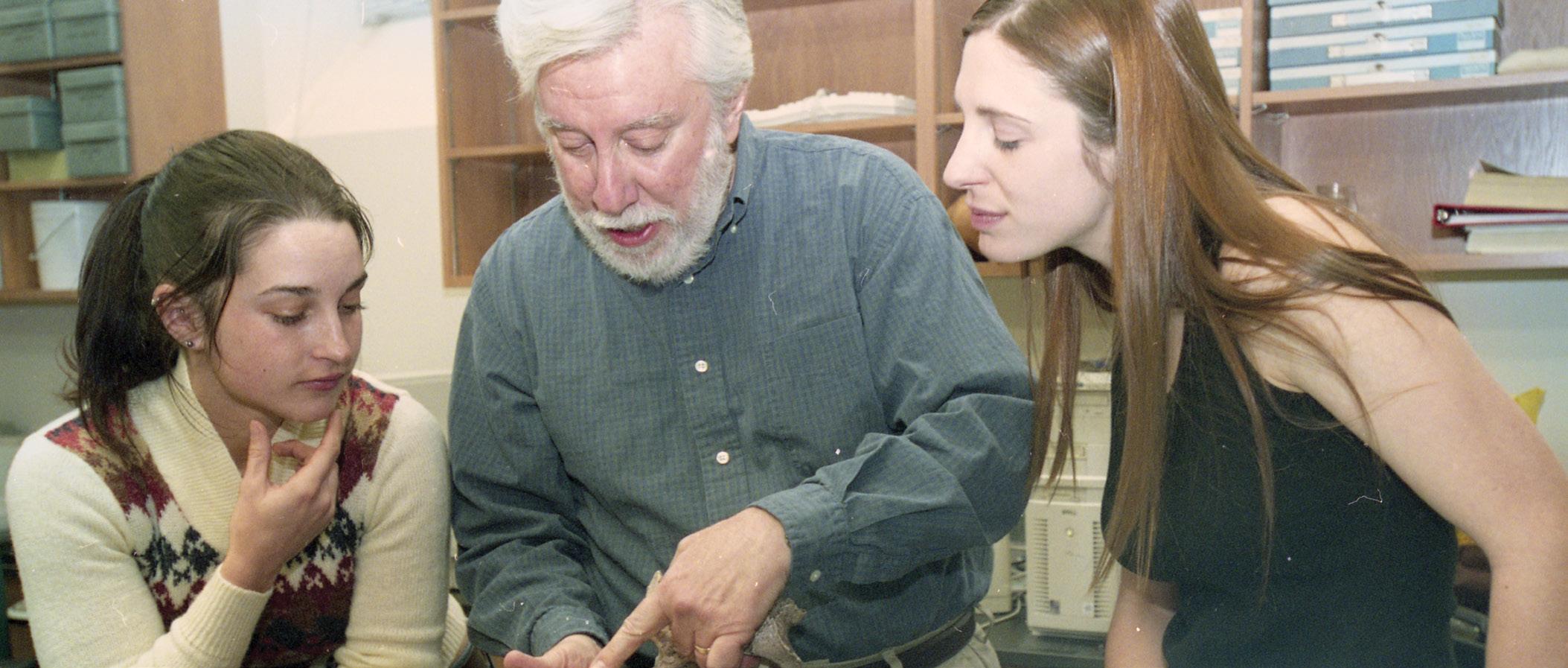
4 minute read
Fiona Marshall, the James W. and Jean L. Davis Professor
Fiona Marshall can still remember her first visit to the Washington University campus. It was 1986, and she had just completed her PhD in anthropology at the University of California, Berkeley. Through the windows of the anthropology department, she could see the campus alive with cardinals and redbuds.
“I remember feeling absolutely thrilled to be here,” she said. “It was such an exciting research environment.”
Marshall was introduced to archaeology at a young age growing up in Nairobi, Kenya, a hub for paleontological and archaeological research. She remembers spending time outdoors with her family, finding stone tools, and going to the Nairobi National Museum to hear talks by legendary archaeologists.
It’s the community of scholars in the anthropology department, however, that Marshall has enjoyed the most. When she joined the department in the late 1980s, she felt instantly welcomed and included by her fellow faculty, especially Patty Jo Watson, a leader who paved the way for women in science.
Friday Archaeology, a weekly forum where students and faculty give talks and discuss new research, was started by Watson to welcome Marshall to the university, build community, and incubate scholarship in the growing department. The meeting is as vibrant today as it was then, Marshall said.
“One of the things I have valued more than anything are my corridor conversations in McMillan Hall,” Marshall said.
As an undergraduate at the University of Reading, Marshall knew she wanted to study African archaeology and seized every opportunity to pursue it. She found a mentor in a talented, self-taught Kenyan expert on ancient animal bones. It turned out she had a talent for the work, too.
While looking for a topic for her undergraduate honors thesis, Marshall happened to be present when a graduate student asked for help identifying some Holocene fossils from Koobi Fora, Kenya. Marshall volunteered and went on to identify many of the bones as belonging to domesticated goats, much to the surprise of the graduate student. To this day, her honors thesis contains the oldest known evidence for domesticated animals in Kenya.
Marshall went on to a career filled with research related to animal domestication, the spread of food production, and hunter-gatherer ethnoarchaeology. That diversity prevented boredom and sparked new ideas, she said. “I found going back and forth between experimental, ethnoarchaeology, and excavation really stimulating.”
Today, Marshall is regarded as a global expert on human influences on African savannas and on animal domestication. Her research on cats and donkeys has shed light on domestication and emphasized the significance of donkeys for early trade routes, household mobility, and women’s work.
Marshall has loved her time teaching at WashU. “I have learned so much from teaching such wonderful students,” she said. This spring marks her 36th year teaching “Zooarchaeology,” a course featuring an incredible collection of skeletal materials that Marshall built into a necessity for any aspiring archaeologist or PreHealth student.

“I have learned so much from my colleagues about diverse topics such as climate change, lost crops, or the latest discoveries. I have also forged meaningful relationships and exchanged cutting-edge information.”
In retirement, Marshall is looking forward to birdwatching, painting, and spending time with her grandchildren. She also plans to continue her research and professional activity.
Richard Smith, the Ralph E. Morrow Distinguished University Professor
Richard Smith found the perfect job at WashU. “Other people talk about having the best job in the world because they don't know about this one,” he said with a smile. Smith’s retirement this year marks the end of a long and winding career in academia, including nearly four decades at WashU. He began his career as an orthodontist, a choice — made by a new college graduate, against the backdrop of the Vietnam War — born from necessity.
Smith began his time at WashU as a professor and chair of orthodontics in the now-closed School of Dental Medicine. Shortly after he joined the school’s faculty, he was asked to take on the role of dean and informed that he would need to help close the school. When it shut its doors in 1991, Smith transferred to the Department of Anthropology, where he’d had a joint appointment.
In 1993, Smith became the chair of the anthropology department. He also began teaching “Introduction to Human Evolution,” a seminal course that Smith transformed into a musttake for undergraduates. Smith’s goal was to teach a great course, one “where in the dorms students would say, ‘Oh, it doesn't matter if you're majoring in anthropology — take this.’”
And he succeeded. The number of anthropology majors at WashU increased during Smith's tenure, becoming the largest major for undergraduates.
Smith also won the deep respect of many students. After several years of teaching, students asked Smith to give “The Last Lecture,” a tradition started at Brown University that asks a notable professor to deliver their hypothetical final and teaching. The change allowed him to “be the faculty member I always wanted to be.”
Smith has spent the last nine years publishing papers that challenge the status quo on statistical methods commonly used by biological anthropologists. He has also developed and taught two graduate-level courses that all anthropology doctoral students are encouraged to take.
Smith describes his time with anthropology as a “deeply meaningful, personal fit.” But after 39 years of service to the lecture. Smith was the first WashU professor asked to give this lecture, and the experience is one of his fondest memories.
In 2008, after 15 years as department chair, Smith became dean of what was then the Graduate School of Arts & Sciences. The new role was more challenging than expected, however, due to the 2009 recession.
“It was stressful, coming up with solutions to problems that we never had before,” Smith said. “There wasn’t a roadmap for how you decide what funding to cut.”
Smith served as dean for six years before returning to the anthropology department. After nearly 30 years of administrative obligations, he was excited to focus on research university, he is looking forward to spending retirement with his grandchildren, traveling, improving his chess game, and reading, while he and his wife Linda remain in St. Louis. When asked what books he plans to pick up, Smith said he plans to return to a childhood favorite: mystery novels.











